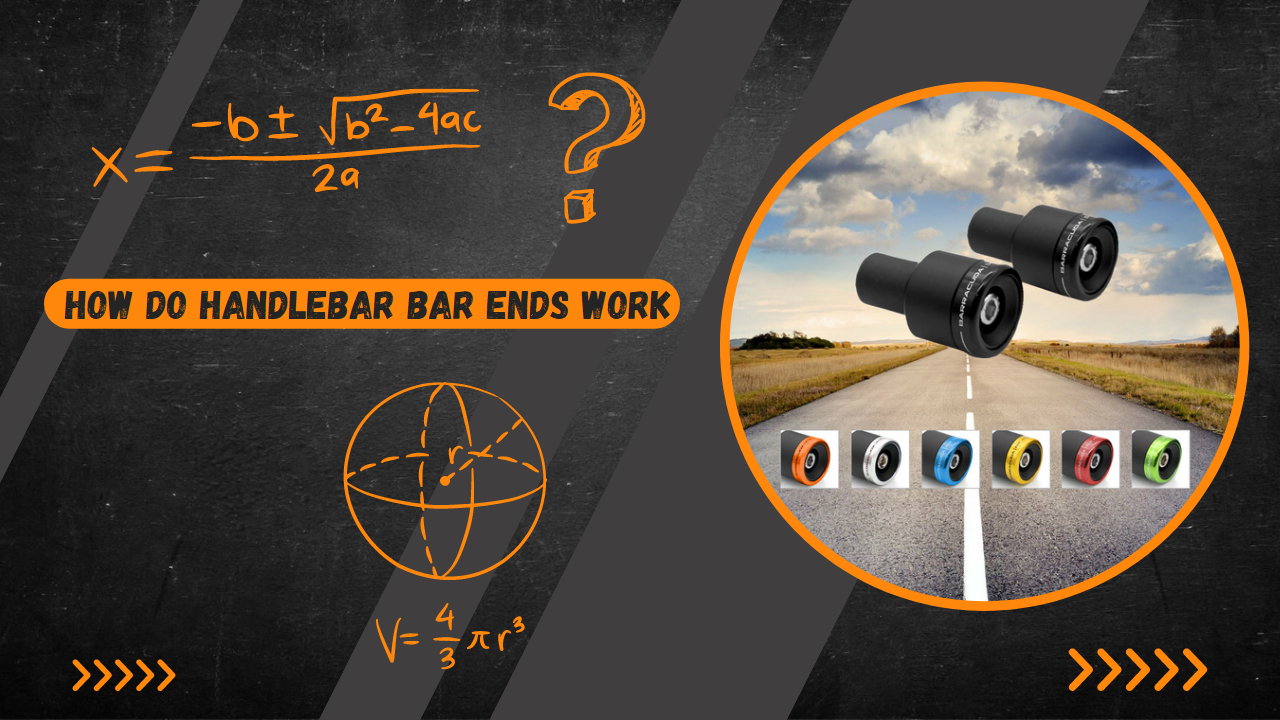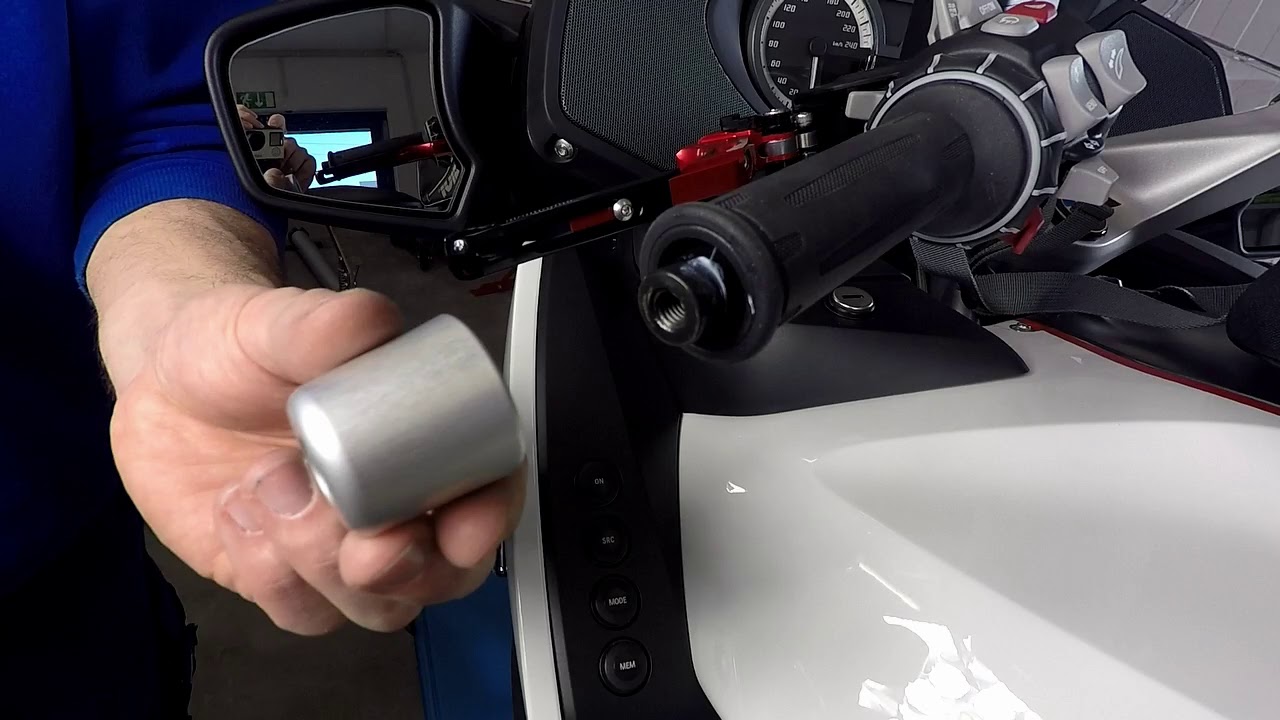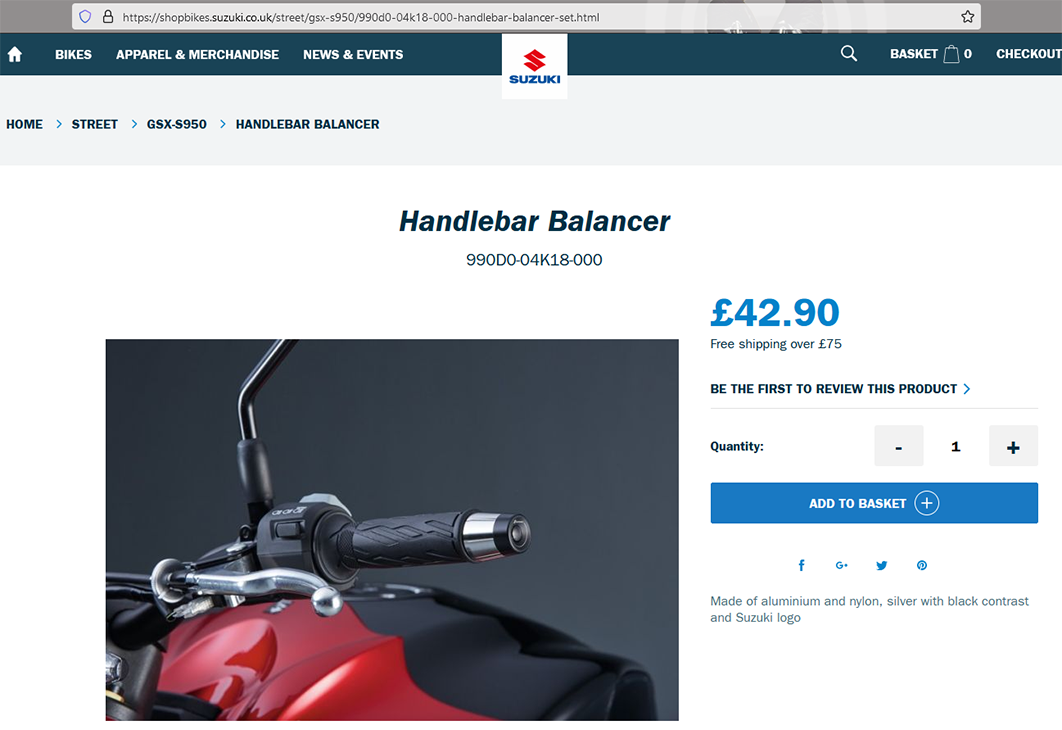How do handlebar bar ends work
26 September 2022

So let's talk about bar ends...
Such a small accessory but with endless "controversy" around it.
🔸 What are handlebar bar ends?
These little components, which are NOT called just weights, or bar terminals or whatever else you may have heard them called, have been the source of many disputes.
We will try to unravel the tangle by
putting things in some order.

Bar ends have always been a source of concern for riders…
Let's start with the basics: bar ends are usually between 3 and 6 centimeters long and are placed on the left and right of both ends of the handlebar.
The factory bar ends with which motorcycles and scooters come out from the production line, are made of iron.
Here begins the first major controversy:
iron, as a metal by itself, is much heavier than its expensive competitor,
aluminum, by a ratio of one to three. That means that a bar end of the same
dimensions made of iron weighing 100 grams, if made of aluminum will weigh only
33 grams!
🔸 Why factory bar ends are so heavy?
This argument is reinforced by the
manufacturers themselves (!) as on their websites of the original accessories,
they present bar
ends made of aluminum as an enhancement accessory...

Example from the official Suzuki website where aluminum and nylon bar ends are sold
Although such a thing would never be officially admitted by any of these global giants, the truth is that with this move they increase the reflection on the weight of bar ends how important this is.
🔸 Why after market bar ends are lighter?
On the other hand, we meet the companies
that manufacture after market bar
ends such as Barracuda,
Rizoma, Puig, Lightech and countless others. These companies use EXCLUSIVELY
aluminum as a raw material resulting in lighter bar
ends. It's easy to ask "but why don't they also make them out of iron
so they cost three times less?"
Obviously, they expect to channel something more improved and upgraded to the
market than the existing one, so aluminum, as a higher quality metal and having
the advantage of not rusting and being able to be anodized in any color, is the
ideal choice.
🔸 What if my handlebar is shaking?
The reality is that bar
ends affect the frequency at which the handlebar is tuned.
In case that a rider feels shaky in his handlebar, the first things he should
look at are:
• The condition of the tires: worn tires or even lack of balance or air pressure can easily cause tuning
• The presence of additional accessories such as a very high windshield, luggage rack with top case or anything else can affect the "weighing" of the motorcycle
• Any eventual wear of the silent blocks
• Check the yoke bearings
• Shock absorbers in need of repair or replacement
Bar
ends should be the last factor causing trembling and once all the above
have been checked.
🔸 Can we solve the problem by replacing bar ends with heavier ones?
You will also have noticed that some manufacturers produce models with mirrors on the bar end (eg Triumph/Ducati), some others have as optional equipment the so-called "lever protectors" which replace the bar ends etc. thus causing all of us to worry even more about how important is the weight of the bar end on the handlebar.
Be that as it may, in the case of intense trembling in the handlebar, as riders we are obliged to contact our mechanic so that all of the above can be checked before placing all the blame on the bar ends.
In the second part we will discuss about the installation of the bar ends, the adapters that come with them, their compatibility according to the handlebars and the motorcycle and much more.